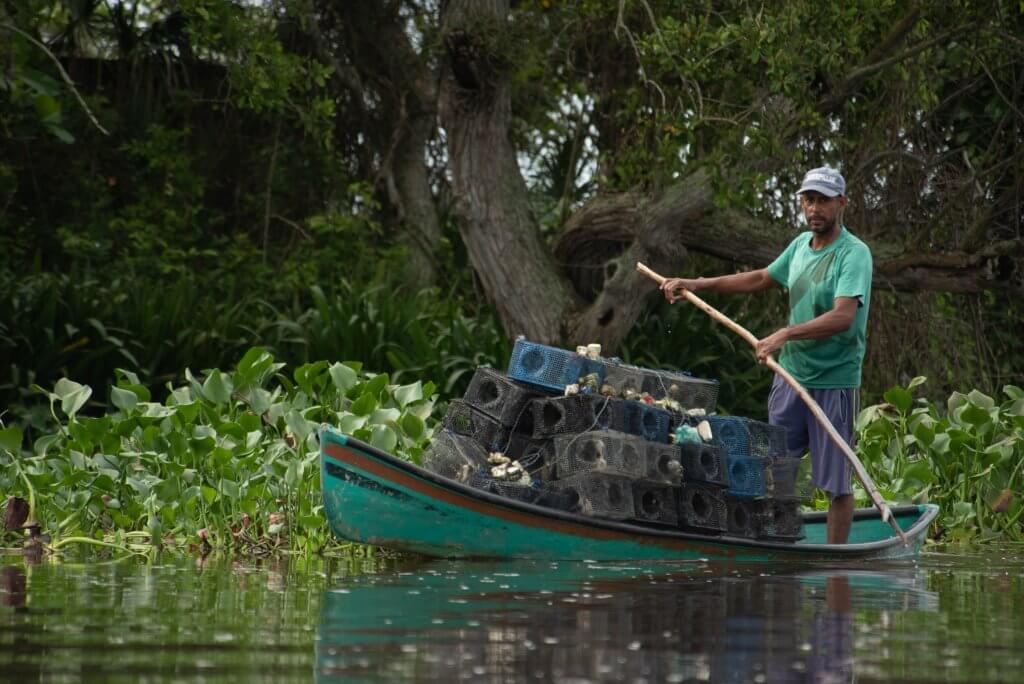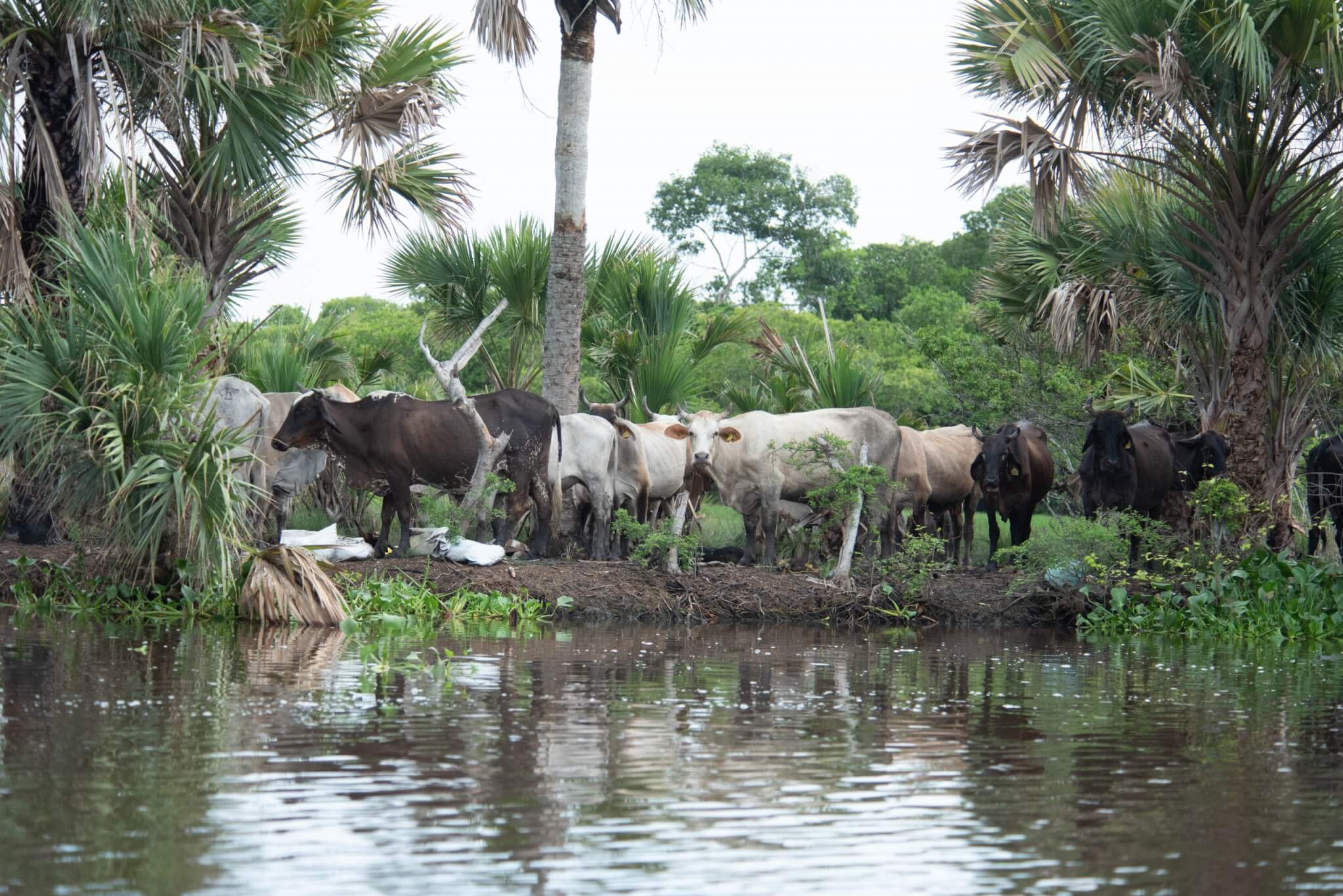In an area where most landowning farmers make a living from sugar cane production or cattle ranching, and where poor, landless fishermen rely on seasonal jobs and opportunities that the lagoons offer, can the restoration of mangrove improve the livelihoods of these communities?
Mangroves are one of the most threatened forests in the world. Yet, these tropical forests not only harbor rich biodiversity, but also provide ecosystem services to the people who live close by. They also help mitigate climate change thanks to their soils’ capacity to store large quantities of carbon.
This is why Livelihoods Funds are actively engaged in mangrove conservation and restoration at scale. Since 2009, more than 25,000 hectares of mangroves have been restored in Senegal, India, Indonesia. Livelihoods Funds are now writing a new page in Mexico.

To address these complex social and environmental issues, Livelihoods Venture has launched a 20-year mangrove restoration project in the Alvarado Lagoon System, in the Mexican state of Veracruz, to improve the livelihoods and climate resilience of the local communities. The project will re-establish 2,100 hectares of mangrove and flooded forest and help recover ecosystem services that will benefit 7,000 people. Funded by the Livelihoods Carbon Fund #2, it will also support the development of diversity of income generating activities for farmers and fishermen and improve social inclusion.
The initiative will be implemented by a well-established and highly experienced local non-governmental organization (NGO), Pronatura Veracruz, or PNV, and the plantation of 6.2 million trees is expected to generate 1 million tons of carbon over 20 years.
Communities’ livelihoods under threat from decades of mangrove deforestation
A third of Alvarado Lagoon System’s mangroves have been lost since 1975.
Near the remaining mangroves, communities of landowning farmers raise cattle or cultivate sugarcane, while landowning fishermen harvest the fish, crustacean, and mollusks that the lagoons offer. These diverse groups of landowning households own between 15 to over 100 hectares of land. Their primary sources of income come from either fishery, milk, cattle, or small livestock, which can be supplemented by other opportunities that the mangroves offer, such as beekeeping. In the narrow strip close to the lagoon, poor and landless fishermen have settled without property rights.
Most landowners are not far above the decent living wage, but the small group of poor and landless fishermen struggle to live off the declining stock of fish and temporary jobs on other farms. Nevertheless, both communities are increasingly facing challenges in maintaining their families’ livelihoods in a degraded and low productivity environment.
But why were the mangroves cleared in the first place?
Historically, the first sugar fields and pasture lands were established during the Spanish colonial rule, and over the last decades agricultural activities extended into the mangroves. To convert mangroves or wetlands into cropland or pasture, farmers had to modify the natural waterflows and remove the vegetation. Unfortunately, the converted land rapidly became unsuitable for farming due to the persistence of several inches of water, and the inundation has been exacerbated by deforestation in the upper watershed. The clearing of mangroves led to soil subsidence, or sinking of the ground, as the soil was no longer bound by the trees’ extensive root system. Additionally, herbaceous plant species that are unsuitable for cattle ranching developed and now thrive in the submerged land. Farmers were eventually forced to abandon those areas. They all recognize that it is impossible to pursue agricultural activities on the converted land due to the level and depth of inundation and the resulting vegetation.
How are farmers and fishermen adapting in the deforested areas?
Today, farmers in the area predominantly raise cattle or cultivate sugarcane on higher land, while fishermen continue to harvest the depleting stock of aquatic species. They live according to the rhythm of the natural cycles of water, which are increasingly affected by global warming: rise of sea level, frequency and severity of floods or storms, and soil erosion.


Fishermen families
Cattle
Strengthening communities’ livelihoods and climate resilience
The Alvarado Lagoon System is registered as a Ramsar (wetland of international importance) site, an Important Bird Area (IBA), and is considered one of the most productive estuarine-lagoon systems in Mexico. The local communities are highly aware of the ecosystem services that mangroves provide to the local population, particularly for climate change mitigation and adaptation.
Livelihoods Venture is launching an inclusive project that will bring together landowners and marginalized fishermen to help recover the natural environment. As most of the degraded mangroves are on private land, farmers are willing to allocate their unproductive land to restore its natural ecosystem. They are also eager to boost productivity or diversify their sources of income to improve their livelihoods.
The project will deliver training to farmers and fishermen, provide them with technical assistance, support the acquisition of equipment to improve productivity and help connect them to additional markets. The riverine settlers with no land titles will be given the opportunity to receive training in restoration techniques and obtain short-term employment for restoration of the mangroves.
Programs to develop diversity of income-generating activities
| Restoration activities | Fisheries | Beekeeping | Milk production |
| The poorest families will receive training on restoration technique and earn additional income that can be integrated into their seasonal job cycle. | The project will support family-scale aquaculture units (floating cages or aquaculture pond). It is estimated that the program can increase income by a minimum of 25%. | The program will help professionalize the seasonal production and distribution of honey during the mangrove blooming season. | Farmers will have the opportunity to improve their cattle’s breed, health, and food intake in order to increase milk production. |
A restoration technique based on science and indigenous know-how
Mangrove trees and shrubs can be found along shores and thrive in environments – muddy soil, peat, sand, and coral rock – where most trees cannot. So why haven’t the degraded mangroves regrown naturally?
The natural regeneration of mangroves has been impeded by two factors: accidental fires started by poachers and overflooding that has been amplified by global warming. To address these obstacles, Livelihoods Venture is partnering with Pronatura (PNV), a local non-governmental organization who has been actively protecting and restoring ecosystems in the area since 1998. Thanks to an innovative technique that blends science with ancient Aztec knowledge called chinampas, PNV has successfully rehabilitated 985 hectares of degraded mangroves since 2012.
PNV will implement the tried and tested chinampas, also known as floating gardens, to prevent seedlings from drowning. The modernized version of chinampas will be combined with firebreaks, an obstacle such as a strip of cleared land that prevent fires from spreading, to protect the growing mangrove trees from fires.
How does Pronatura’s restoration technique work?
Combining science with the Aztec’s chinampa technique
| Step 1 | Step 2 | Step 3 |
| The restoration teams will create modernized chinampas, an improved technique used by the Aztecs, to keep seedlings above the water line. They will be built on site, using cattail grass and mud, which are locally available, and bio-degradable materials. | The operation “channel cleaning” will improve water flow. It consists in removing wood debris and vegetation that have accumulated in natural and man-made channels. | The restoration teams will establish firebreaks to protect seedlings from accidental fires. |
The project will generate long term benefits for a large number of families, by increasing the productivity of the fisheries in the lagoons, diversifying sources of income and improving resilience to extreme weather such as hurricanes.


